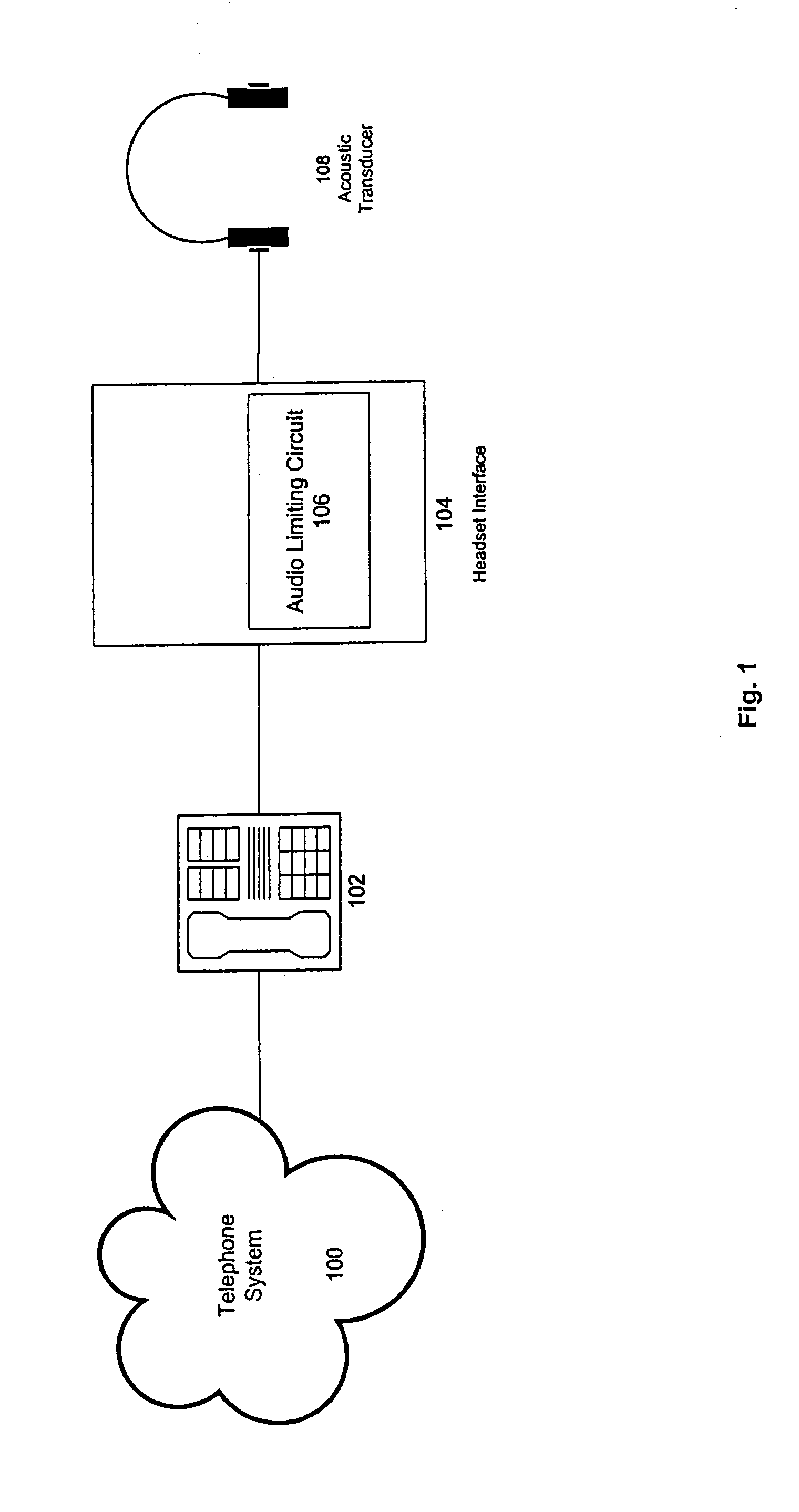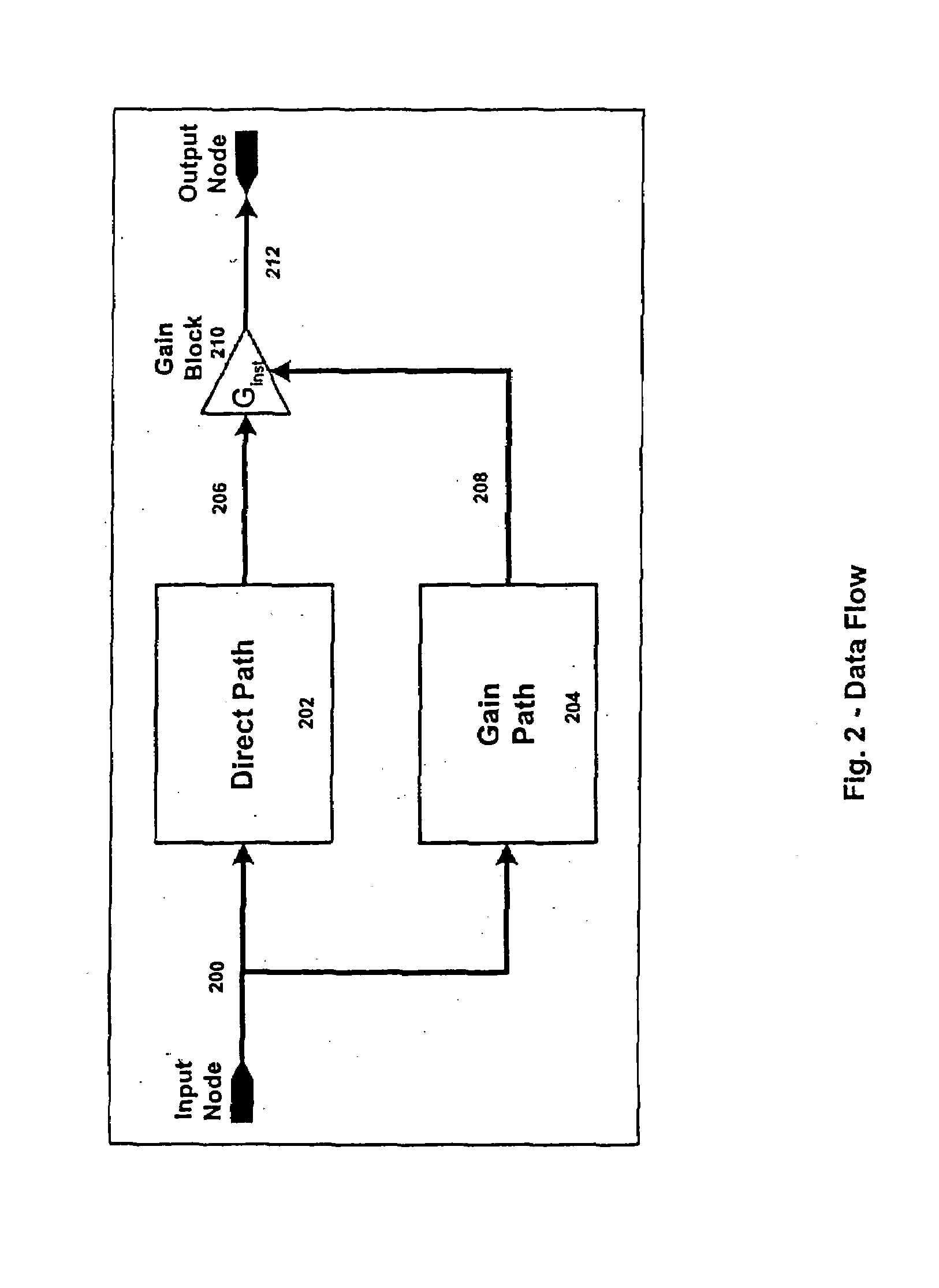Audio limiting circuit
a technology of limiting circuit and limiting circuit, which is applied in the direction of gain control, electrical transducers, instruments, etc., can solve the problems of significant distortion over a wide range of signal levels, degradation of sound quality of acoustic signals, and limited signal output levels, so as to minimize the distortion of sound output and increase the quality. , the effect of smooth transition
- Summary
- Abstract
- Description
- Claims
- Application Information
AI Technical Summary
Benefits of technology
Problems solved by technology
Method used
Image
Examples
Embodiment Construction
[0031]In the following description, for purposes of explanation, numerous specific details are set forth in order to provide a thorough understanding of the invention. The arts of digital signal processing and acoustic engineering are such that many different variations of the illustrated and described features of the invention are possible. Those skilled in the art will undoubtedly appreciate that the invention can be practiced without some specific details described below, and indeed will see that many other variations and embodiments of the invention can be practiced while still satisfying the teachings of the invention.
[0032]FIG. 1 shows one implementation of the present invention in combination with a telephone communication system to provide audio signal limiting characteristics. A telephone 102, which itself is connected to a telephone network 100, is connected to a headset interface 104 containing an audio limiting circuit 106 in accordance with one embodiment of the present...
PUM
 Login to View More
Login to View More Abstract
Description
Claims
Application Information
 Login to View More
Login to View More - R&D
- Intellectual Property
- Life Sciences
- Materials
- Tech Scout
- Unparalleled Data Quality
- Higher Quality Content
- 60% Fewer Hallucinations
Browse by: Latest US Patents, China's latest patents, Technical Efficacy Thesaurus, Application Domain, Technology Topic, Popular Technical Reports.
© 2025 PatSnap. All rights reserved.Legal|Privacy policy|Modern Slavery Act Transparency Statement|Sitemap|About US| Contact US: help@patsnap.com



